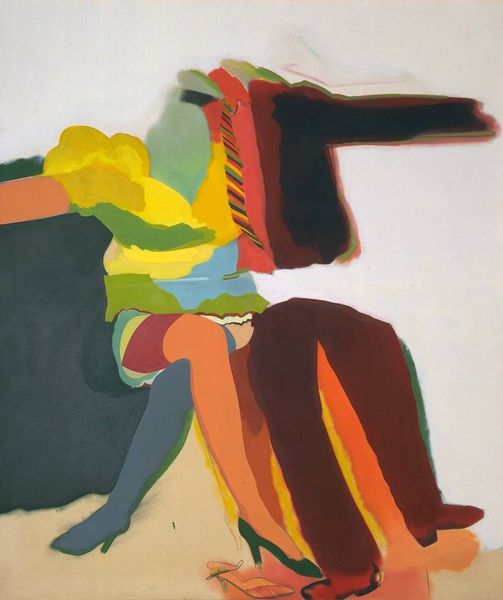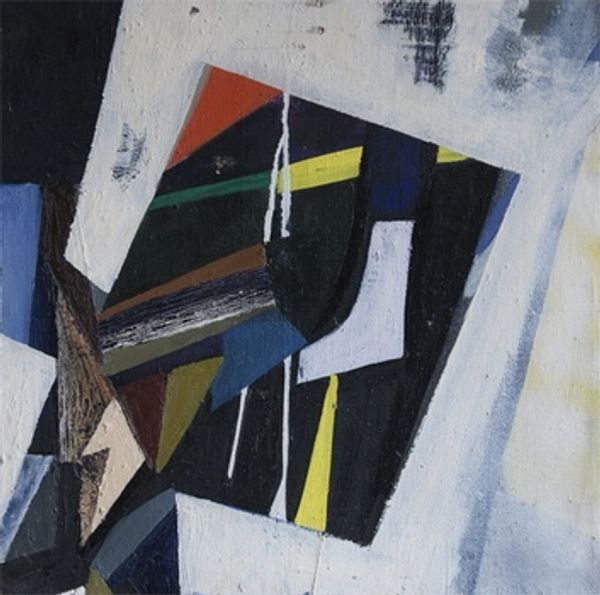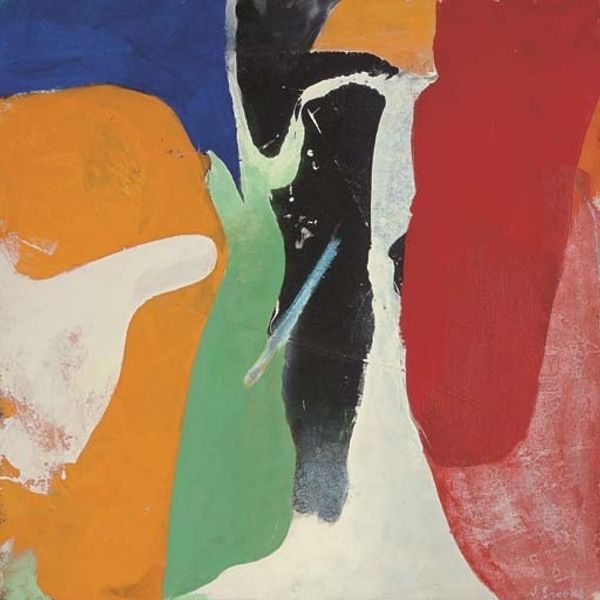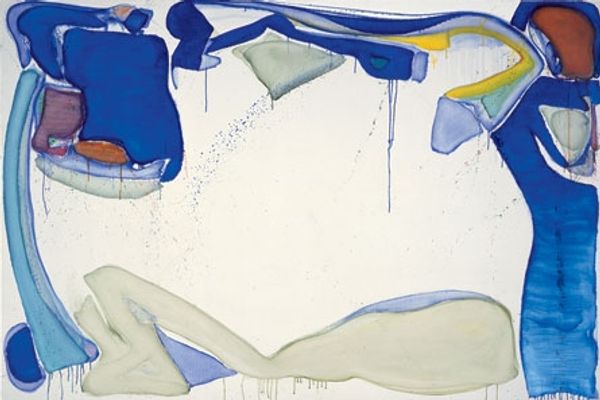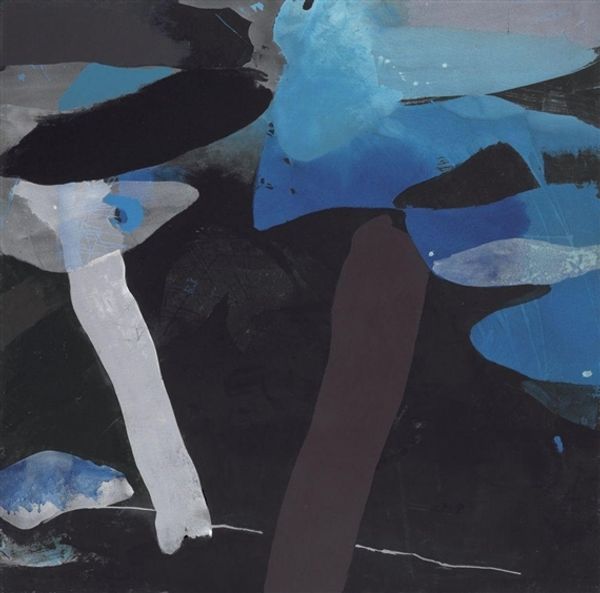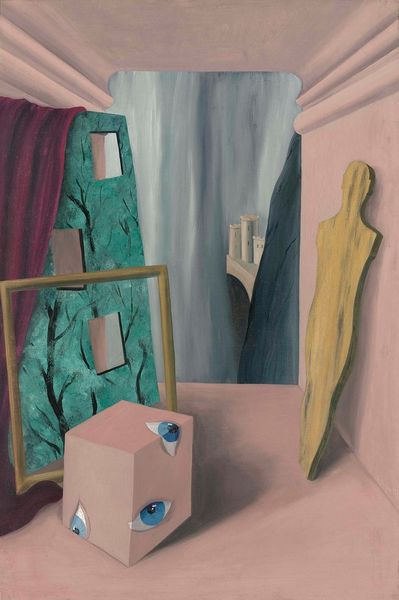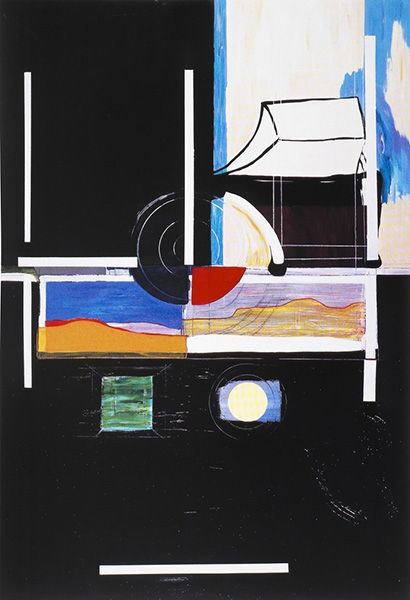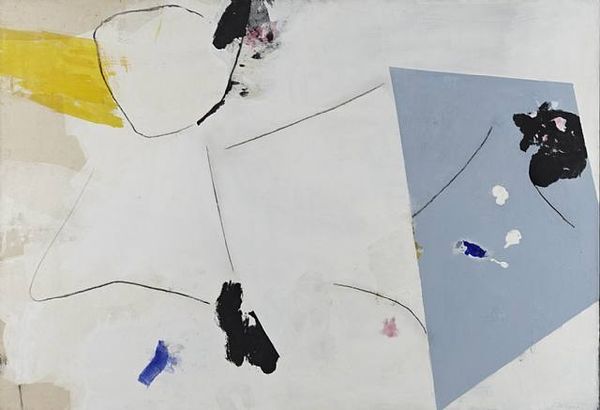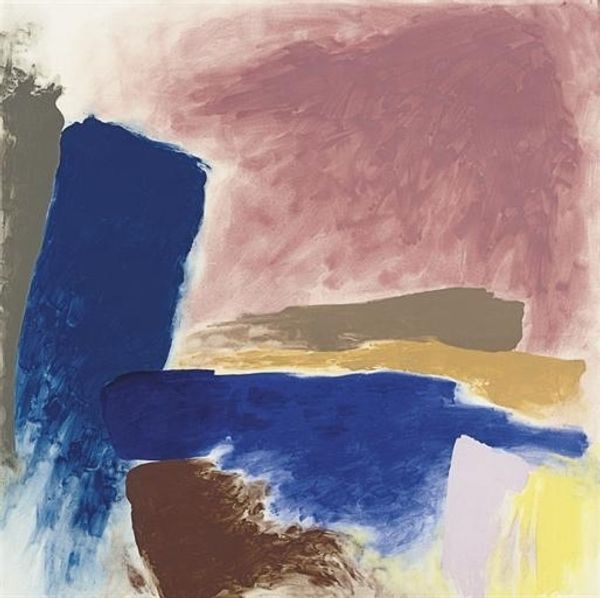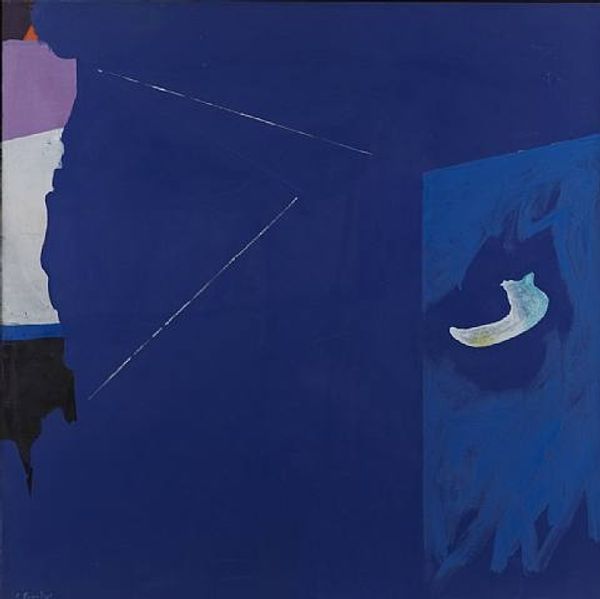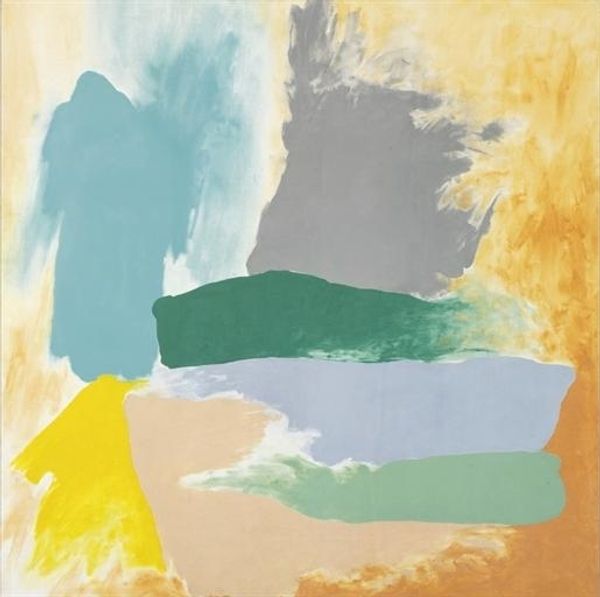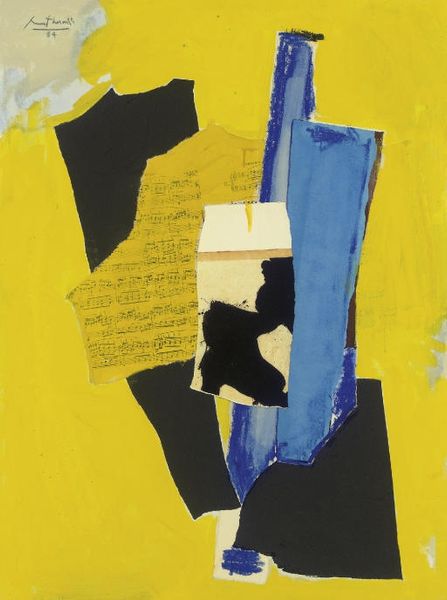
painting, acrylic-paint
#
portrait
#
acrylic
#
painting
#
acrylic-paint
#
oil painting
#
acrylic on canvas
#
portrait art
#
modernism
Copyright: M.F. Husain,Fair Use
Curator: Here we have M.F. Husain’s "Untitled (Portrait of an Umbrella Series)," created around 1980. It's acrylic on canvas. A peculiar piece, wouldn’t you say? Editor: My first thought? It's wonderfully odd. There’s a raw vulnerability here. A face barely suggested, embraced by bold blocks of color. It almost feels like a dream, where familiar forms shift and blur. Curator: Well, Husain often challenged academic art traditions, so the "blurring" you sense might stem from the materiality of production itself. This isn’t about rendering likeness; it is, arguably, about the gestural energy of paint application. Acrylics allowed for fast-drying, bold strokes and that very directness is evident. Editor: Directness, yes, but with a twist of melancholy. The stark white face, almost erased, paired with that prominent, somewhat tattered umbrella—it speaks of hidden stories, doesn’t it? The umbrella, typically a symbol of shelter, appears almost fragile here, stripped down to its bare form. What is it meant to conceal, or perhaps reveal? Curator: Let’s consider context. Husain’s works frequently referenced Indian mythology and culture, and it is imperative we read into what the production itself provides. Could the faceless figure represent societal expectations placed on women, with the umbrella serving as both shield and burden, culturally speaking? It’s all speculation without further documented research, but perhaps worth mentioning in context to our listeners. Editor: Context enriches it, certainly. And thinking of cultural significance, perhaps that blue is relevant. The umbrella hovering above the subject might be connected with protection but also potentially highlighting challenges within India’s societal strata during the late 20th century? The bright pink or reddish color as well seems an integral color of the subject, what's your thoughts about it in the painting? Curator: Right—a complex relationship. As to the pink hue atop the central head-shape. I’d say that's likely linked to consumerism. Acrylic paint becoming easily commercially available—its color impact created affordable statements, which may or may not link back to a consumer commentary or expression. Husain engaged the available materials of his moment, challenging conventional perceptions of labor, capital and art-making itself, for that time, that geographic location. Editor: Exactly. What first appears to be almost childlike becomes layered with meaning, thanks to material analysis and considering that very context of production you address! I find I am drawn to its imperfections; that's what breathes life into it. Curator: I’m inclined to agree. We can both appreciate then how it transcends mere portraiture— it transforms into something quite resonant.
Comments
No comments
Be the first to comment and join the conversation on the ultimate creative platform.
